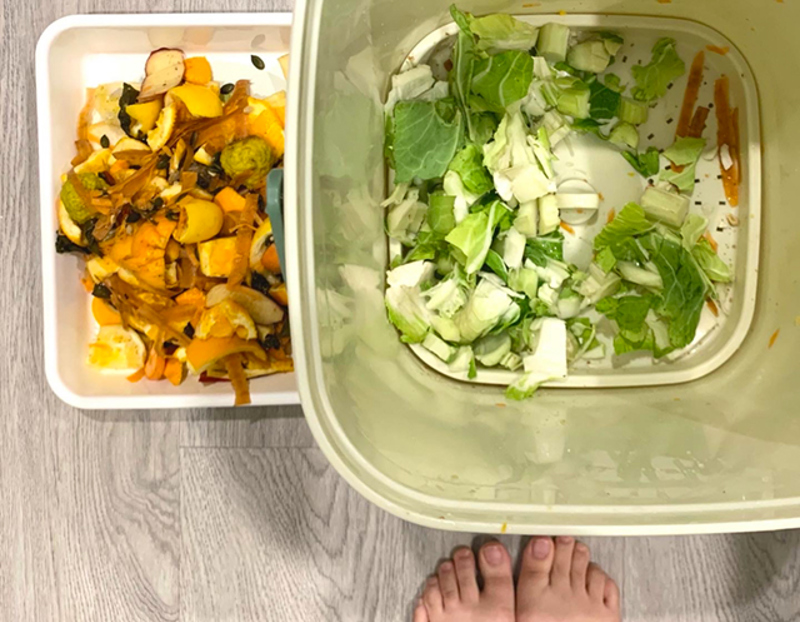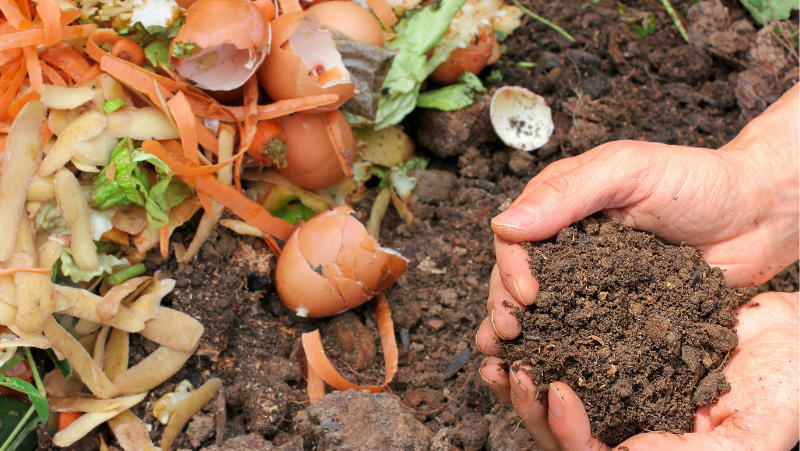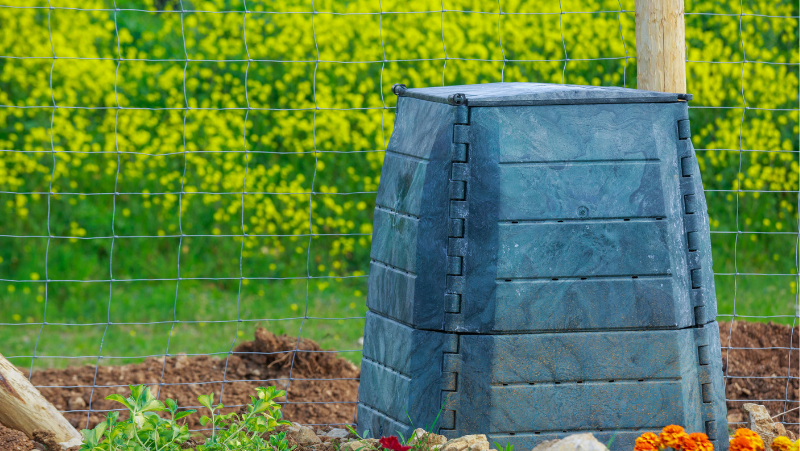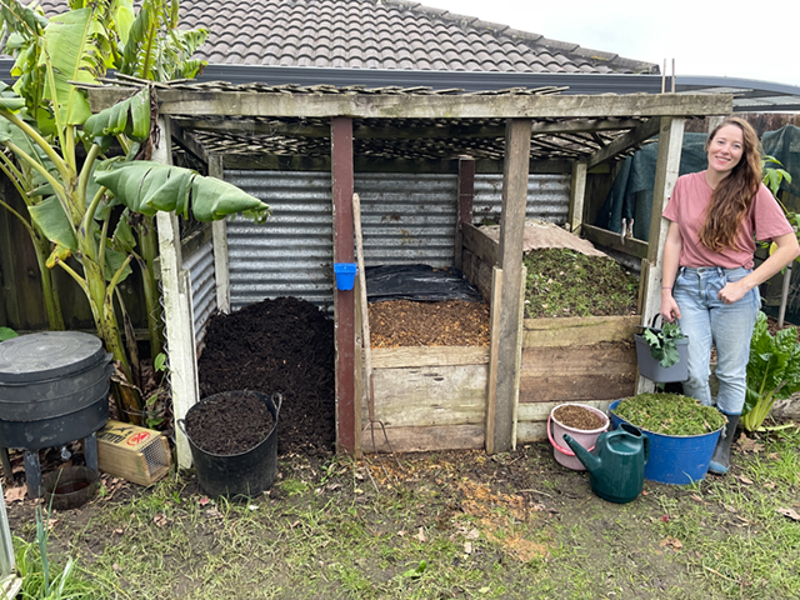Yates Account
Join now
Create a Yates account today!
Sign up to join the Yates Garden Club for monthly e-mails packed with seasonal inspiration, tips for success & exclusive promotions.
Plus if you’re a Garden Club member you can take part in the Yates Growing Community - a blog to share successes, get advice & win prizes in fun challenges along the way!

Forgot password
Enter the email address associated with your account, and we'll email you a new password.

During National Gardening Week in 2022, we ran a Compost Idol competition, asking entrants to give us their top tips for composting. The entries were so good, we’ve collected the tips to share them!
Our first great tip is from Jennifer Chan in Hawke’s Bay: she signed up to a composting workshop in her area and found it an easy way to learn from the experts and share ideas. She is running a bokashi system in the kitchen, using it to feed herbs in her “little zen garden.”

Jennifer Chan's Bokashi ingredients
What to put in your compost
Claire van Beek suggests learning the fundamentals: “Get to know your greens and browns. The magic of making compost relies on how the greens (nitrogen) and browns (carbon) interact. An easy recipe is: half greens e.g. fresh grass clippings, fruit and vege scraps, weeds, manure etc; and half browns e.g. fallen leaves, egg cartons, ripped up cardboard, toilet rolls, small twigs, sawdust, straw etc. Add them to your compost bin in thin layers, about a maximum of 10cm high, watering as you go. OR mix everything together first, before you put it in your compost bin (so that browns and greens are touching), and it to your bin, and you'll be good to go!“
Leith Wallace has her method perfected: “I put everything in my compost bin, all my food scraps, most soft garden waste (not tradescantia or onion weed), vacuum cleaner dust, paper towels from the kitchen, fallen leaves and grass clippings. I get vegetable scraps from a friend and fruit waste from the Community Centre After School programme. I make sure it is all mixed and occasionally add coffee grounds, lime, or blood and bone. I've tried hard to rat-proof my bin and it now sits on a layer of bricks and in a basket of chicken wire. That seems to be effective, although it's not mouse-proof. As a bonus I get piwakawaka hovering around my bin because they love all the little midges that fly up when I take the lid off. I've even had a fantail perch on the side of the bin - lovely!”
Vicky Ruka from Whāngarei says “I go to local pet shops and ask for any waste paper, hay and mess from rabbit or guinea pig cages. Usually I leave them a bunch of black bags and they fill them and text when the bag’s full. I also keep an eye out for free pony poo and shredded paper.”
Elaine Katene from Hāwera says “We use lovely compost all through our gardens and the plants have never grown or looked better. There are plenty of tiger worms doing their thing in the compost. We even put the pine cat litter in there. I usually sprinkle organic lime on it in the layers too.”
Caleb Flanagan advises “My best tip for new composters would be to collect as many fallen leaves from deciduous trees as possible from autumn through to winter, save them in wool sacks somewhere out of the rain until spring, when the grass is growing fast and 'browns' are harder to find. It’s the most resourceful way to build a good pile early in the season while utilizing all of your lawn clippings and garden waste, and ensuring the carbon to nitrogen ratio is still well balanced.”

Keeping your compost going
Katie Loten suggests “keep it moist but well-drained. Like most things there’s a happy medium, and it will work best if it isn't at an extreme of moisture. For the past two summers it’s been so dry here in Auckland that our bin dried out, and that meant that the composting process almost completely stopped. We now keep an old hemp cot mattress inner over the top like a blanket to keep it moist (it also helps to keep it warm during winter).”
Lesley McIntosh in Oamaru says: “My tip would be to keep the material turned often. Also gathering some seaweed from the beach adds wonderful moisture to help with the breakdown.”
Kerry Young in Whanganui uses tried and true methods: “Worked a 2 bin setup for years, works very well. Have your bins close to your garden – it’s your feedstock. Layer with a variety of materials (occasionally) I use pea straw, and good ash from the fire. Turn occasionally and mix. When the batch is full, I cover with a layer of pea straw and leave for nature and worms to do the job. I don’t add leaves as they can create a fairly impenetrable layer. Don’t fill your bin too high. That’s about it.”

Where to site your compost
Natasha Shanks from Miramar suggests “Have it in an easy to access place - I use a bokashi set up by the kitchen and then when its ready put it into the normal compost to save multiple trips in the often wet and windy weather. It also helps having a little helper too!”
Bhavna Panchal agrees, suggesting “Use a bokashi bin in your kitchen, you don't have to go outside in a rain to put in your scraps, easy as.”
Michelle Grant says: “love that it's by a tap for easy cleaning of our small compost bin from the kitchen and also if we do hot compost in the future there is a water source right there.”
Jacky Grant’s top tip for composting on a sloped site is to compost on each different level. “I do this by having a designated area on each level for composting. One level has a bag discreetly tucked away in a corner. Next level has a tarp under a tree where the compost is sandwiched in a taco fold. Next level has compost bins that are hidden behind a shed. The one level that is in the far far corner of the garden, I just leave any weed/garden material where it was pulled from and put it back into that bed (and tell myself I'm practicing permaculture). It acts as mulch and suppresses more weeds from popping up. Diehard weeds, like wild ginger, tradescantia, convolvulus etc, get shoved into body bags (bin liners) and dumped under the house to die in darkness!”

Claire van Beek's 3 bay setup.
The compost setup
Heidi tells us her husband Chris Pene has built a 3-bay compost bin using recycled timber and untreated pallets. “The rails at the front slide out, as does the roof for easy access when turning and when the compost is ready to use. He's put slightly raised metal grates at the bottom to assist with aerating. His number one tip is to have a good mix of old and new material e.g. old hay, straw and vegie scraps and regularly turn it over.”
Claire van Beek has a brilliant setup: “We live in Te Atatū Peninsula and don't have a huge property – about 600m2 - but we've designated the bottom corner of our garden to compost. We have three compost bays, with removable slats which makes the compost easy to access. I have a worm bin close by, so that I can add worm castings, diluted worm tea, or worms themselves when I am layering up the compost heap. I grow comfrey so that I can add handfuls of this nutrient-rich compost accelerator whenever I want. I keep a small bucket for collecting any bits of plastic that I find in our heap. Try as I might… it’s remarkable and frightening how much plastic turns up in there! Fruit labels are the worst. Our compost is usually pest free (if we ever add cooked food, then we bury it), but a local organisation makes predator traps, and we have one that sits beside compost. We bury the pests in the compost heap = bonus garden goodness.”
Laurice Gilbert from Wellington prefers the slow and steady approach: “We built our three stage compost about 40 years ago and it's looking a bit worse for wear these days. The bins start at the top of a bank and finish at the bottom, beside the vegie garden. Everything goes in the top: kitchen scraps, cat litter, cut up prunings, dead annuals and spent perennials, the tops of weeds after I've broken off the bulbs to throw away (montbretias and onion weed are the biggest culprits). Basically, anything that has lived. Though not Wandering Willie, convolvulus, or anything else noxious. It’s a slow compost, so not for the impatient. Once a year what's left in the bottom gets cleaned out and the top two bins get turned into the next bin down.”
You can read more composting advice from Yates here.















Share
Share this article on social media